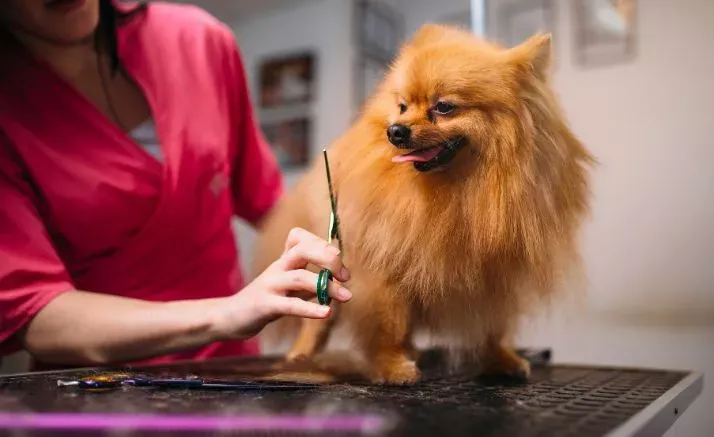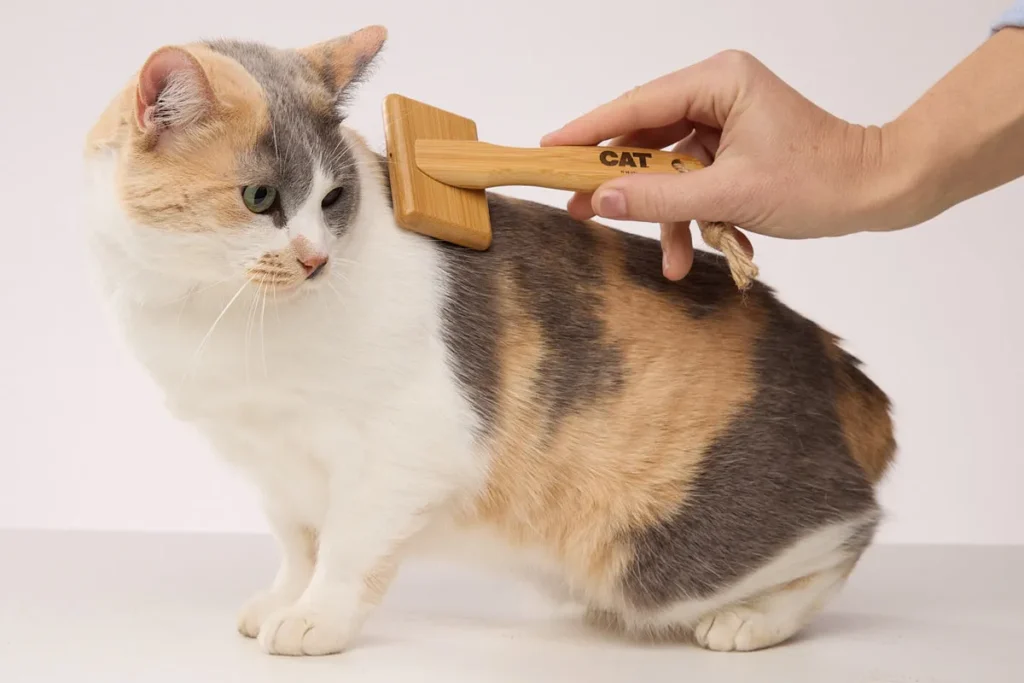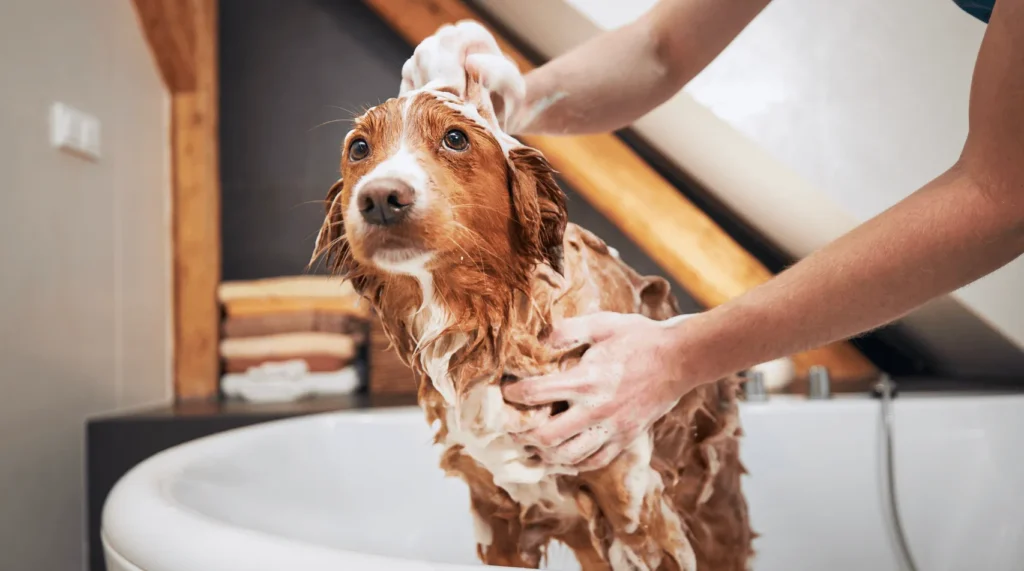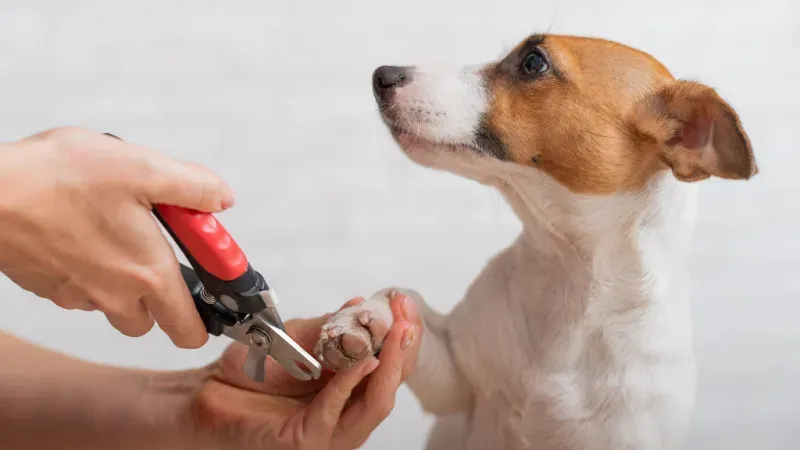Keeping your pet clean and fresh doesn’t always require a visit to the groomer. With a little practice, you can master DIY pet grooming and ensure your furry friend stays comfortable, healthy, and happy. Whether you’re looking to save money or simply want to extend the time between professional grooming sessions, this guide will help you learn how to safely and effectively groom your pet at home.

Why DIY Pet Grooming Matters?
DIY pet grooming has become a popular trend for many pet owners. Not only does it help maintain your pet’s cleanliness, but it also gives you a deeper bond with your furry companion. Regular at-home grooming can reduce the need for frequent professional grooming sessions and even help catch early signs of health issues, such as skin irritations or parasites.
By the end of this guide, you’ll have all the necessary skills to keep your pet fresh and well-groomed at home.

1. Essential Tools for DIY Pet Grooming
Before diving into grooming your pet, it’s essential to gather the right tools. The right equipment can make the job easier and ensure the comfort of your pet.
Here’s a list of tools you’ll need for basic DIY pet grooming:
- Brushes: A good brush helps to remove dirt and loose hair while preventing tangles. Depending on your pet’s coat type, you may need a slicker brush, comb, or pin brush.
- Nail Clippers: Trimming your pet’s nails is an important part of their grooming routine. Make sure to choose a clipper that suits your pet’s size and nail thickness.
- Shampoo and Conditioner: Always use pet-specific shampoos and conditioners. Human products may cause irritation to your pet’s skin.
- Ear Cleaning Solution: Regular ear cleaning can help avoid infections, especially in pets with floppy ears.
- Towel: Keep a towel handy to dry your pet after their bath.
- Pet-friendly Deodorizing Sprays: To keep them smelling fresh between baths.
2. Brushing Your Pet’s Coat
Brushing is one of the simplest and most effective ways to keep your pet’s coat in good condition. Not only does it help with shedding, but it also prevents mats and tangles, promotes healthy skin, and allows you to check for skin problems like bumps or irritations.
Step-by-Step Instructions for Brushing Your Pet’s Coat:
- Step 1: Choose the right brush based on your pet’s coat. For long-haired pets, use a slicker brush to remove tangles. For short-haired pets, a bristle brush or rubber brush works best.
- Step 2: Gently brush your pet’s fur in the direction of hair growth. Start from the head and work your way down to the tail.
- Step 3: Pay attention to areas that tend to mat, like behind the ears and under the legs. Be patient and gentle to avoid discomfort.
- Step 4: For pets with particularly thick coats, you may need to brush them multiple times a week. Long-haired pets might require daily brushing.

3. Bathing Your Pet
Bathing your pet regularly is essential to keep them clean, especially if they have an active lifestyle or get dirty easily. Overbathing can dry out your pet’s skin, so make sure to only bathe them when necessary.
Step-by-Step Instructions for Bathing Your Pet:
- Step 1: Wet your pet’s coat with lukewarm water. Avoid water that’s too hot or too cold.
- Step 2: Apply a pet-friendly shampoo and massage it gently into their fur. Focus on their neck, back, and belly, then rinse thoroughly.
- Step 3: Apply conditioner if your pet has a long or dry coat. Rinse thoroughly.
- Step 4: Use a towel to dry your pet, patting gently to absorb moisture. If your pet tolerates it, you can use a blow dryer on a low, cool setting.

4. Nail Trimming for Pets
Trimming your pet’s nails is an essential part of their grooming routine. Long nails can lead to discomfort, infections, and even mobility issues. However, nail trimming can be a bit tricky, so it’s important to do it safely and carefully.
Step-by-Step Instructions for Nail Trimming:
- Step 1: Use the appropriate pet nail clipper. There are different types (scissor-style, guillotine-style), so choose the one that feels comfortable for you.
- Step 2: Hold your pet’s paw gently but firmly. Look for the ‘quick’ (the pink area inside the nail), which should not be cut. Trim small sections at a time, avoiding the quick.
- Step 3: If you accidentally cut the quick, don’t panic. Apply styptic powder or cornstarch to stop the bleeding.
- Step 4: For pets that are particularly anxious about nail trimming, try using treats or positive reinforcement to make the experience more comfortable.

5. Cleaning Your Pet’s Ears
Regular ear cleaning can help prevent infections and ensure your pet stays comfortable. Pet ear infections are common, especially in breeds with floppy ears or excessive hair inside the ear canal.
Step-by-Step Instructions for Cleaning Pet Ears:
- Step 1: Use a pet-safe ear cleaner and a soft cotton ball or gauze pad. Avoid using cotton swabs, as they can push dirt further into the ear canal.
- Step 2: Gently wipe the outer ear canal and the flap of the ear. Don’t insert anything deep into the ear canal.
- Step 3: If your pet’s ears are excessively dirty or smelly, it may be a sign of an infection, and you should consult your veterinarian.
6. Brushing Your Pet’s Teeth
Dental hygiene is often overlooked, but it’s just as important as brushing your pet’s coat or trimming their nails. Regular tooth brushing helps prevent tartar buildup, gum disease, and bad breath.
Step-by-Step Instructions for Brushing Your Pet’s Teeth:
- Step 1: Get a pet-friendly toothbrush and toothpaste. Never use human toothpaste, as it can be toxic to pets.
- Step 2: Start by gently massaging your pet’s gums with your finger to get them used to the sensation.
- Step 3: Brush your pet’s teeth in a circular motion, focusing on the outer surfaces of the teeth.
- Step 4: Be patient, and gradually increase the length of time you spend brushing your pet’s teeth.

7. Final Touches: Deodorizing and Paw Care
After you’ve completed the basic grooming steps, you can finish with some final touches to keep your pet smelling fresh and comfortable.
- Deodorizing Sprays: If your pet has a mild odor, you can use a pet-safe deodorizing spray to freshen them up between baths.
- Paw Care: Regularly check your pet’s paws for any debris, cracks, or cuts. If your pet’s paws are dry or cracked, you can apply a pet-safe balm to moisturize them.
Conclusion:
DIY pet grooming can be a rewarding and enjoyable way to keep your furry friend fresh and healthy. By following these simple and effective grooming techniques, you can extend the time between professional grooming sessions while ensuring your pet’s well-being. Remember to use the right tools, be gentle, and maintain a calm, positive environment for your pet during grooming.
Whether you’re brushing, bathing, trimming nails, or cleaning ears, regular grooming will make a noticeable difference in your pet’s comfort and appearance. Happy grooming!
FAQs About DIY Pet Grooming
How often should I groom my pet at home?
The frequency of grooming depends on your pet’s breed, coat type, and activity level. For most pets, brushing once a week is recommended. Long-haired pets may require daily brushing, while short-haired breeds may need less frequent grooming. Bathing should be done as needed, usually every 4-6 weeks, unless your pet gets particularly dirty.
What’s the best way to keep my pet calm during grooming?
Keeping your pet calm is crucial for a successful grooming session. Start by creating a calm environment, using gentle voices, and offering treats as rewards. You may also want to get your pet used to the grooming tools before starting. If your pet is especially anxious, take breaks and try to keep grooming sessions short and positive.
How can I safely trim my pet’s nails at home?
Nail trimming can be tricky, but it’s essential for your pet’s health. Always use pet-specific nail clippers and cut small portions at a time to avoid cutting into the quick (the pink area in the nail). If you’re unsure, start by trimming just the tips and gradually increase the length as you get more confident. Use styptic powder or cornstarch if you accidentally cut the quick to stop bleeding.
What type of brush should I use for my pet’s coat?
The right brush depends on your pet’s coat type. For long-haired pets, a slicker brush is ideal for detangling, while a pin brush works well for smoother coats. Short-haired pets typically do well with a bristle brush or a rubber brush. Regular brushing with the correct brush type helps remove loose hair and prevents mats.
Can I use human shampoo to wash my pet?
No, you should never use human shampoo on your pet, as it can irritate their skin. Pet shampoos are specifically designed for their pH balance and skin type. Always choose a gentle, pet-specific shampoo and conditioner to maintain the health of your pet’s coat.
Is it necessary to clean my pet’s ears regularly?
Yes, regular ear cleaning is important, especially for breeds with floppy ears or excess hair inside the ear canal. Clean your pet’s ears with a pet-safe ear cleaner, but only wipe the outer ear. If your pet shows signs of ear infections like redness, swelling, or a foul odor, consult your veterinarian.
What should I do if my pet is difficult to groom?
If your pet is nervous or aggressive during grooming, take things slowly. Gradually get them used to the grooming tools and work with short sessions. Using treats as positive reinforcement can help create a more enjoyable grooming experience. If grooming becomes too difficult, it may be worth seeking a professional groomer for assistance.
How do I handle shedding with my pet?
Regular brushing is the key to controlling shedding. For pets that shed a lot, you can also try using a deshedding tool to remove loose fur more effectively. Bathing your pet occasionally with a pet-safe shampoo will also help reduce loose hair.
Can I trim my pet’s fur myself?
While you can trim some parts of your pet’s fur, like around the paws or ears, full grooming or trimming a pet’s coat can be tricky and is often best left to a professional. If you want to trim your pet’s fur, make sure to use pet-specific grooming scissors and take extra care to avoid accidents.
What are the signs that my pet may need professional grooming?
While DIY grooming can help maintain your pet’s coat, there are times when professional grooming is necessary. If your pet has severe matting, skin issues, or if you’re unsure how to properly cut their fur or nails, it’s a good idea to visit a professional groomer. Additionally, if your pet shows signs of stress or discomfort during grooming, a groomer may be better equipped to handle them.
Follow us on YouTub Premium Mod APK